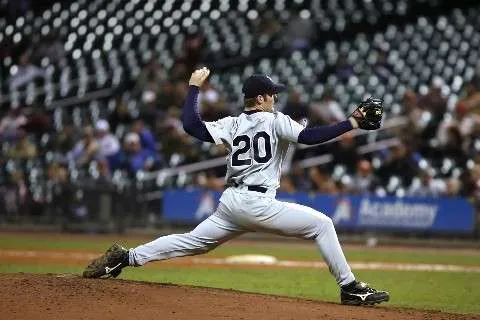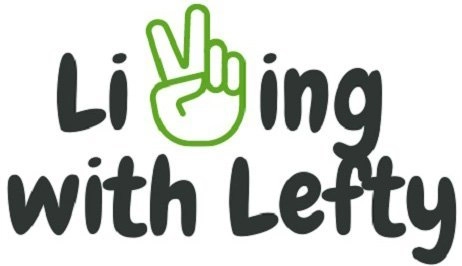Even the best batters out there know that they better watch out when it comes to left-handed pitchers. Since there are not so many out there, most batters don’t have much practice up against them and are therefore unused to their pitching styles.
It’s not only that batters are not used to them, but also their ability to curve the ball and throw complicated pitches thanks to their enhanced spatial thinking.
Why are left handed pitchers valuable in baseball? Below, we’ll dive deeper into the reasons why some of MLB’s best pitchers are left-handed and take a look at the best throws for lefties. We’ll also take a look at their throwing speed, finding out just what it is that makes them so valuable.
Table of Contents
- 1 How Many Left Handed Pitchers in MLB?
- 2 Why Left Handed Pitchers Are Better
- 3 Best Pitches for Lefties to Throw
- 4 Why do Left Handed Pitchers Pitch to Left Handed Batters?
- 5 Why do Left Handed Pitchers Throw Slower?
- 6 Why do Left-handed Pitchers Have More Movement?
- 7 How To Throw a Down-and-Away Pitch Left-Handed
- 8 So, Why Are Left Handed Pitchers Valuable in Baseball?
How Many Left Handed Pitchers in MLB?
There are not very many lefties in the world. As a matter of fact, 88 to 90% of the population is right-handed, making left-handedness a rare trait. In the world of baseball, however, it’s not as rare as you’d think, with 21% of the best pitchers of all time being left-handed. This is completely opposite of what you see among catchers, as there are currently no left-handed catchers in MLB.
Today, the MLB has a total of 137 left-handed pitchers, which totals to a whopping 39% of the entire league’s pitchers. Because there are so many of them, there is obviously something about them that makes them valuable. After all, there are few positions that left-handers can play in baseball.
In baseball, there is a lot that goes into the game. The coaches take special care to pay attention to the other team’s roster, seeing who’s up to bat and which pitcher will be the best to go up against them. All of those swaps during the game are for a reason, one of which could be due to the powers of left-handed pitchers.
Best Left Handed Pitchers
The MLB has a good number of left-handed pitchers and they are sometimes even credited in baseball for the term “southpaw”. The top-ranked on the roster today include:

#1. Max Fried – Atlanta Braves
Max Fried is a 6’4, 190-pound pitcher born in 1994. He has pitched 27.2 rounds this season with 29 strikeouts to claim. His average Fastball speed is 93mph and his Curveball is 73mph.
#2. Trevor Rogers – Miami Marlins
Born in 1997, Rogers stands 6’5 and weighs in at 217-pounds. This season alone he’s pitched 128 innings in which he’s struck out opponents 151 times. Though his fastest Fastballs come in around 97mph, his average is about 93mph.
#3. John Means – Baltimore Orioles
This season, Means has pitched a little over 146 innings and struck out 134 batters. Means stands 6’3, weighs 235-pounds, and throws an average of 93mph.
#4. Clayton Kershaw – LA Dodgers
Clayton’s average speed comes in at only 91.8mph, ranking him as one of the slower pitchers. However, don’t let that fool you, as he’s got some tactics that have struck out more than 144 batters in his 121 innings pitched.
#5. Josh Hader – Milwaukee Brewers
Hader is 6’3 and 180-pounds. This season, he hasn’t pitched very much, though he’s got an average pitching speed of 94mph and a lineup of pitches that are tricky to hit, even by the most experienced batters.
Why Left Handed Pitchers Are Better
When teams have a left-handed pitcher on their roster, they are at an advantage. In fact, scouts will actually take a closer look at lefty-handed pitchers. Why? You may ask. The reasons might surprise you.
Their Rarity
Because most pitchers in the MLB are right-handed, most batters are not used to left-handed pitchers. This is similar to opponents in school or college-level basketball. Changing up the position that a pitcher throws can make things difficult for batters, tricking their brain and making them swing when they should hold back.
The fact that most players don’t have much experience batting against a left-handed pitcher makes them a good tool to have when the score is tight and it’s the other team’s turn to bat.
They’re often also used for the platoon advantage where they usually do well against a left-handed hitter because a right-handed pitcher is easier to hit for a left-handed batter.
This is one of the sports where being left-handed can be advantageous, unlike in football.
Their Brain
As more research is conducted on the brain, the functions of different parts are becoming better understood. When it comes to left and right brain hemispheres, it’s the right side of the brain that’s responsible for spatial awareness.
Since the right hemisphere is connected to the left side’s motor skills, those who are left-handed are better at processing objects in space. This gives pitchers a huge advantage, able to better process objects in space, including their dimensions. When pitching, they usually are so more accurately, able to outsmart their right-handed batters due to their sharpened spatial skills.
Their Mix-ups
All pitchers, no matter if they’re right-handed, left-handed, or switch-pitcher, have a variety of throws. From curveballs to changeups and even fastpitch, they all have their own twist and spin. While right-handed pitchers tend to have more speed, left-handed pitchers often have a better spin and curve.
Against a right-handed batter, which makes up most of the MLB, left-handed pitchers are harder to hit off of, mostly due to their differences in direction when throwing.
Their Longevity
Because right-handed pitchers have the majority in the league, left-handed pitchers get swapped out much more often and are usually saved for occasions where the score is close or there is a strong lineup of batters on deck.
Best Pitches for Lefties to Throw
The best pitchers in the MLB have a number of pitches up their sleeve, able to change their grip, the flick of their wrist, and even the position of their arm. All of these things and more go into the science behind pitching, some of which can get pretty complicated. For left-handed pitchers, these are the top 3 best pitches to throw.

#1. 4-Seam – Ultimate Best Left-Handed Pitch
The 4-Seam pitch is perhaps one of the most popular pitches around, known for its ease and difficulty. It’s easy for pitchers to hold and hard for batters to hit, even more so when the pitcher is left-handed.
When a leftie throws a 4-seam fastball, it comes at the batter straight on, with each seam appearing with each rotation. This is one that all pitchers have on their list and one that they use most frequently.
#2. Curveball Grip – Trickiest Pitch to Hit Off a Left-Handed Pitcher
This pitch is not only tricky to hit but also takes some technique from the pitcher. Once they have a snug grip, they can use the rotation of their arm and wrist to put a spin on it that’s hard for batters to hit.
The topspin on the ball mixed with the wind pushing against it will make the ball start higher and curve down, landing right into the catcher’s glove. Lefties with a good curveball grip pitch tend to rank high on the list of top pitchers, making it a good one for lefties to know.
#3. Circle Changeup – Best “Show-Off” Pitch for Lefties
When you see this pitch in action, it has a screwball type of movement that can put batters in a trance. The spin and curve make it difficult to hit, which is where the pitch gets its fame.
Mix that with a left-handed thrower and you’ve got a pretty powerful combo that batters won’t see coming. The pitch requires a grip where the thumb and index finger touch, creating a circle-like shape, which takes some practice to get the hang of.
Why do Left Handed Pitchers Pitch to Left Handed Batters?
Just like any other sport, there is a lot of tactics that go into baseball. Coaches choose their pitchers wisely, matching them up against batters that have a lower chance of hitting off of them. One technique that’s common is putting left-handed pitchers up against left-handed batters, and there are a few good reasons why. This is also part of the rarely talked about platoon advantage where pitchers do better against same-handed opponents.
First of all, when the lefty goes against the lefty, the ball tends to curve away from the batter, making it appear more like a ball than a strike. Pitchers will release the ball on the same side as the left-handed batter, which creates the illusion that the ball is moving too far off to hit.
Another reason why lefties go up against lefties is because of the view. When batters are opposite-handed from their pitchers, they have a better view of the curve of the ball and tend to be able to better predict how it will curve.
In addition to both of these key reasons why left-handed pitchers go up against left-handed batters is because, just like righties, they don’t have as much practice hitting from a left-handed pitcher. Their lack of practice makes them much less effective when it comes to hitting.
Why do Left Handed Pitchers Throw Slower?
While checking out the stats of the best MLB pitchers in the league today, you’ll likely find that the average speed for left-handed pitchers is slower than their right-handed counterparts. While it might be simple to pin that on the fact that they’re using a different side of their brain, it’s not quite that complicated.
You see, since there are fewer left-handed pitchers in the MLB, their stats are a little less representative of left-handedness as a whole. For every 10 left-handed pitchers, you might have 90 right-handed, giving them the upper hand when it comes to making fast pitches.
Though that might seem to put those that pitch left-handed at a disadvantage, it’s actually quite the opposite. Because there are other advantages to having a leftie on the roster, it’s not particularly worrisome if they’re not throwing over 90mph each and every throw.
They have the advantage of different angles, unfamiliarity, and a certain special flick of the wrist that not many batters are used to. All of these work together to make them one of the most valuable sets of pitchers when it comes to baseball, which is why each MLB team wants at least one of their squad.
Why do Left-handed Pitchers Have More Movement?
There is a common misconception in baseball that left-handed pitchers have more movement. While this is not the subject of scientific study, it’s got some reasoning behind it that you might not have considered before. One of the main reasons branches from the way that batters are trained.
As we’ve mentioned above, the majority of pitchers are right-handed, giving batters most of their practice seeing balls come at them from a particular angle. Switching up that angle can play tricks on the brain, making it more difficult to hit balls and trickier to get the hang of.
Then what is that makes left-handed pitchers seem to have more movement? For starters, it’s the way that coaches train their batters. In most cases, coaches train batters to map the movement of the ball both down and away before deciding whether or not to swing.
Batters that have seen many left-handed pitchers can find the down and away easier, with a higher overall batting average when they face right-handed pitchers. Those that find left-handed pitchers do not do the same, often getting confused with the changeup. This can make it seem like the ball has more movement.
The Tactic
The majority of coaches that are working with a left-handed pitcher will train them to do a few things. The first thing is to throw their fastball arm-side down and the second is to make sure that the ball goes down and away from right-handed batters.
In doing this, coaches are highlighting the advantages that left-handed pitchers have when faced with right-handed batters, able to trick them into swinging or resisting the swing as the ball moves away. This tactic alone can make the ball appear to have more movement, though it’s not been proven that it does.
The Execution
The two words that you’ll hear when coaches are training a left-handed pitcher are “down” and “away.” That’s because they are training them to throw the ball that way, doing so as a way to trick the eyes of batters and make them swing or resist.
To do this, pitchers put a lot of thought and focus into throwing their ball with the right spin and the right curve of the arm, making it come at the batter and then slowly start to drift away. In doing this, the ball seems to run away from the batter at the last minute, making them miss it by just a few seconds.
How To Throw a Down-and-Away Pitch Left-Handed
The down-and-away pitch is one of the most effective for left-handed pitchers, mostly because of the movement and the angle of the ball. To make such a pitch happen, here is what pitchers can do.
Step #1. Position
When it comes to position, there are a few body parts that go into the perfect down-and-away pitch. These include the hand, wrist, and elbow, all of which must stay toward the inside during release. To do that, pitchers will have to watch the position of their arm and hand, throwing with just the right amount of curve.
Step #2. Finger Pressure
When gripping the ball, the one thing to focus on is the pointer finger. The pointer finger should be where most of the pressure is coming from, allowing it to move with you as you toss the pitch.
Step #3. Thumbs Down
The way that a pitcher holds the ball does a lot for the movement and the angle that the pitch comes out to the batter, making it something that should be considered. The thumb should be below the pointer finger, used as a way to stabilize the ball, enhance the grip, and control the angle at release.
Step #4. Flick the Wrist
The wrist has a lot to do with the movement and the angle of a throw, telling it in which direction it will move in order to hit the desired spot. One trick all pitchers use is to flick the wrist in the direction in which they want the ball to curve, enforcing it and putting more of a spin on it to make it more difficult to hit.
So, is it Movement?
While some give left-handed pitchers credit for their ability to put a lot of movement behind a pitch, their curvature and execution have nothing to do with more movement.
Both right-handed and left-handed pitchers have the same amount of movement, so the trickiness of a left-handed pitcher has to do with much more than that.
In addition to throwing in a different way than what most batters are used to, left-handed pitchers also go through a lot of training to execute the proper angles and movements in their pitch, doing so to throw off batters and making them strikeout.
Left-handed pitchers, therefore, do not have natural movement and do not typically throw any faster than right-handed pitchers, though they do have a very different way of throwing and executing their pitch that most batters are unfamiliar with. You can be sure that their left-hander’s baseball glove will be hiding their secret until the last minute!
So, Why Are Left Handed Pitchers Valuable in Baseball?
Most MLB teams will take a left-handed pitcher when they can, as it’s a great tool to have. Many batters don’t have much practice with left-handed pitchers, only going up against them ever so often. It’s this lack of familiarity with left-handed batters that make them difficult to hit off of.
Coaches know that lefties have the ability to pitch opposite of what most batters are used to and therefore will swoop them up when they get the chance. Right-handed pitchers are great too, though many batters have faced them for much of their career and know-how to hit off them and many of their favorite pitches.
